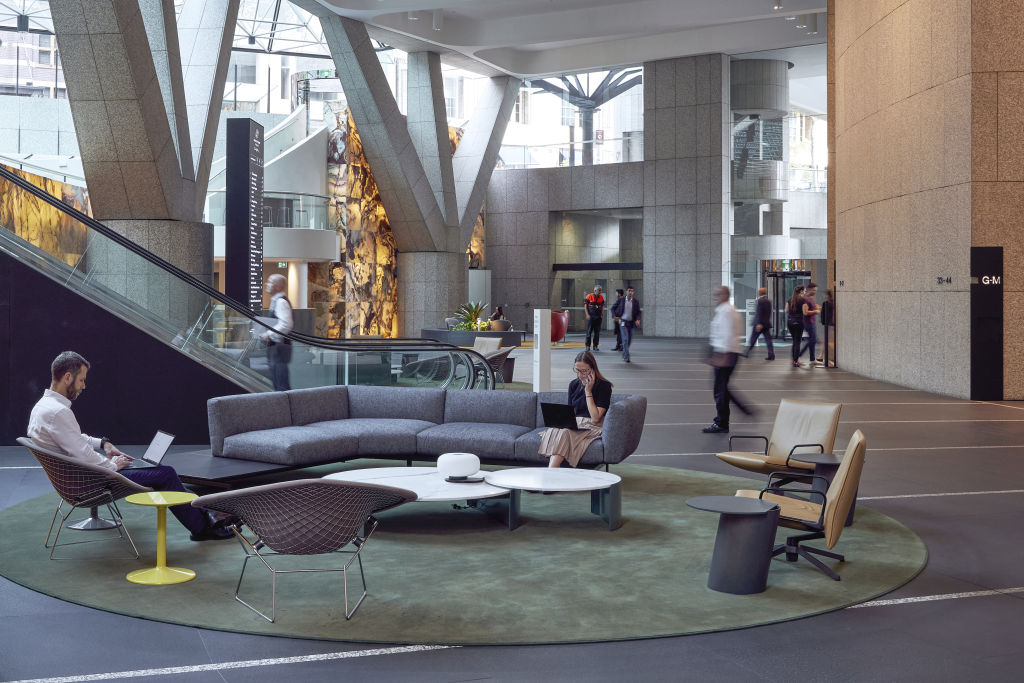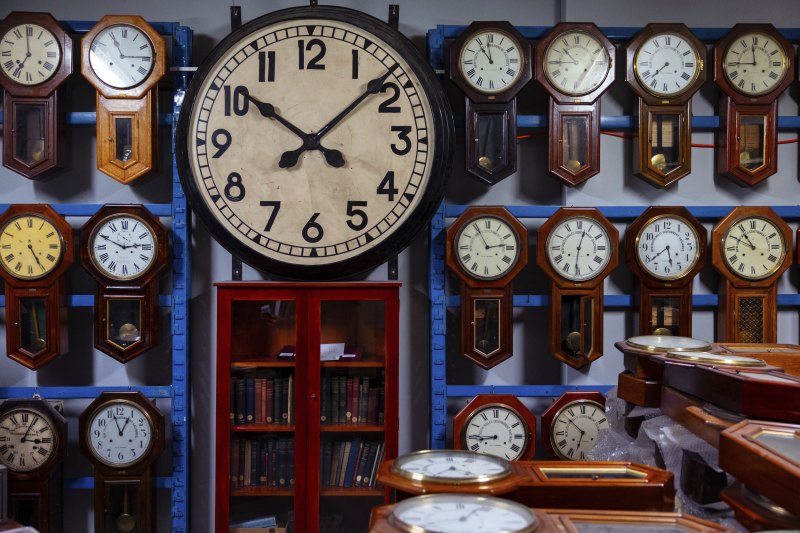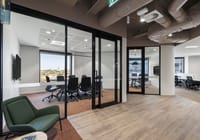
Companies are winning over the workforce in a bid to return to the office
The call for employees to come back to the office is getting louder as employers try to stimulate productivity levels in today’s lacklustre economy. But many management teams are finding it’s an uphill battle as workers refuse to totally abandon the comforts of working from home.
The latest data from the Australian Bureau of Statistics found 37 per cent of Australians regularly work from home – down only marginally on the 40 per cent of 2021. However, that number could drop further as more companies ask staff to return to the office.
Companies that take more of a “carrot” over a “stick” approach are finding employees are slowly returning to the office.
For many businesses, this revolves around creating a sense of community at the workplace, says John Derrick, executive director of Sydney commercial tower Grosvenor Place.
“What we find is that many of our businesses feel that socialisation, actually getting people to talk to each other around the water cooler, is a very important part of their business,” he says.
“I think from a Grosvenor Place point of view, culture is the one thing that we do take pride in. It’s something that we’ve been doing since well before COVID-19.”
To this end, Derrick and his team organise events throughout the year, and they aren’t strictly work related. Thanks to the two beehives Grosvenor Place has placed on its rooftop, one such event is a beekeeping workshop.
“We hold about 63 events every year for our customers who, in some cases, have even said they adjust their work-in-the-office days to suit,” Derrick says. “They might seem like little things; two beehives on one of our roofs, that’s 60,000 bees, and we have bee workshops.
“So, we undertake a number of activities throughout the year with more of a wellness and a community-type focus, which I believe creates a community spirit that makes people want to come into the office.
“And I think that’s what we can do as a building to encourage people back. We can’t mandate it, that’s not our job, but we believe we’re very successful in creating environments that people go, ‘Actually, I want to go into work today. It’s really exciting, things are happening. It’s so much better than sitting at the kitchen table in front of my laptop.’ ”
A global survey by recruitment firm Morgan McKinley found 65 per cent of Australian employers are telling staff to return to offices, which is above the global average of 56 per cent.
Return-to-work mandates, which are widely unpopular and often criticised for flying in the face of productivity, are not the only way to tempt workers back to the office.
The best way for a company to understand what their workers want is simply to ask them, says Daniel Paxton, consultant at commercial tenancy advocates Tenant CS.
“Remember who knows what is best for your staff: your staff,” he says. “So, collaborate with them, survey them, and generally include them in any transition of environment.”
One such merit is the benefit young workers stand to gain when they are around senior or more experienced co-workers. Whether it’s an incidental way of learning or a more structured mentor/mentee program, there are major wins for the company, Paxton says.
Many at-home workers will ultimately make their decision based on the time it takes them to commute to the office. Landlords need to make proximity to transport, whether it’s road or rail, as easy as possible.
“It can sound trivial, but the difference between a five and a 15-minute walk from a train station, or the removal of the need for finding a connecting bus, is huge,” Paxton says.
Creating a relaxed environment is one winning approach, says Jason Luckhardt, commercial chapter committee chair of the Real Estate Institute of Queensland.
“Having space that people feel comfortable in is a big part of the return to work,” he says.
“Access to relaxation space, interactive and quiet space areas, good work infrastructure from the kitchen or lunchroom through to the boardroom all plays a role.”
Practical initiatives include rethinking the dress code to a more casual standard – a measure bound to suit those who have become accustomed to wearing their comfy clothes while working from home.
Buildings with high-end fitouts are also winning more tenants. These more contemporary buildings offer plenty of natural light, functional outdoor spaces and integrated energy efficiencies.
Then there are the office-amenity wars. Commercial landlords are competing for the biggest and best when it comes to plush communal spaces such as end-of-trip facilities and kitchens with the latest appliances.
This article has been created in partnership with Grosvenor Place.










